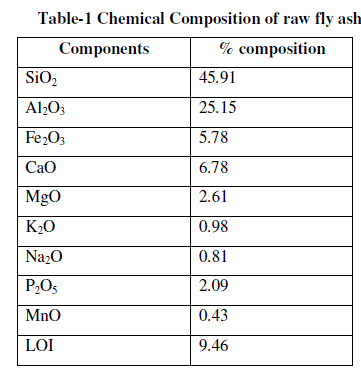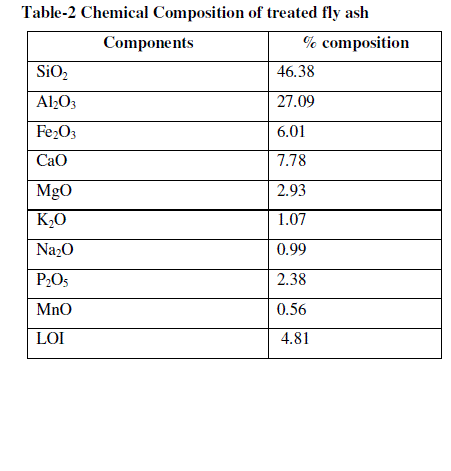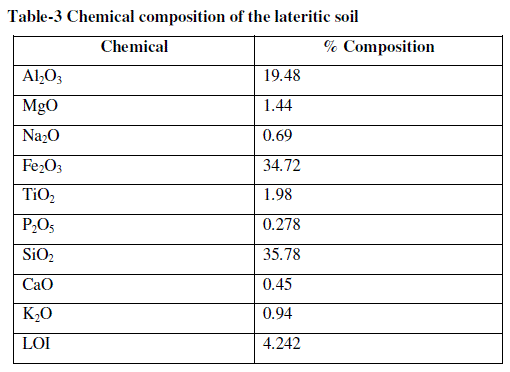ISSN ONLINE(2319-8753)PRINT(2347-6710)
ISSN ONLINE(2319-8753)PRINT(2347-6710)
T.K.Panda1, D.Rout2, J.Tripathy2, B.Rout3 and B.B.Kar2
|
Visit for more related articles at International Journal of Innovative Research in Science, Engineering and Technology
This paper represents the enhancement of different nutrient content of a laterite soil using fly ash. In the study attempt has being made to introduce raw fly ash to different laterite soils samples in various mediums and to observe the chemical composition change in it. The study revealed that HNO3 is found to be the best medium to leach out different nutrients to the soil sample.
Keywords |
| Nutrient content, laterite soil, fly ash, enhancement |
INTRODUCTION |
| Flyash, an inorganic, stable material waste, released from power plants has invited challenges about its disposal. As flyash consists of various multiphase oxides of many elements, when subjected to heat treatment, it provides different types of complex oxidic compounds with variable and encouraging properties. In the other hand, if we take into consideration the laterite soil, it has some interesting geochemical property along with certain lacking of nutrients, which has proved its lower fertility. With the gradual increase in Urbanization, there is a wide increase in the construction parameters. The success of all these construction depends on the soil quality of that area. The principal aim of this paper is to produce an activated flyash mix, which in turn can provide a good amendment material for laterite soil. The base of laterite, consists of a group of igneous and metamorphic rocks (1-5). |
| The lateritic base generally consists of three layers, a basal lateritic clay, a middle laterite gravel and surface crust. The laterite crust has a cellular texture and is usually hard to break with a hammer. It commonly found on slope surfaces. Laterite gravel may be found below a layer of laterite crust. At some places, the gravel deposit is only covered by a thin layer of soil. The third layer is the laterite clay, present below the gravel, above the weathered basement. It has a rich reddish brown color with patches of kaolinite (6-9). |
| In order to conduct the above study, the soil samples have been collected from 6 different locations of Bhubaneswar City. Tests have been conducted taking into consideration the various competition of soil to treated FA, to provide the optimum parametric condition for determining the best ratio, where maximum quantity of nutrients will get absorbed by the laterite soil. |
ANALYTICAL PROCEDURE |
| The fly ash sample taken under investigation has the following composition as represented in Table-1. The treated fly ash has composition represented in Table-2. |
 |
 |
 |
RESULT AND DISCUSSIONS |
| The experimental data represents the enhancement of nutrient content of the soil using flyash as an efficient additive. On the process, the flyash is mixed with the laterite soil mechanically using acetone as a mixing medium.The flyash, before added to the lateritic soil, was treated with different acids i.e. H2SO4, HCl and HNO3 with equal strength and subjected to mix with the flyash to bring free, the nutrient content of flyash to make them mixable with lateritic soil sample. |
| The result obtained was represented in Table-4, revealed that it is possible to utilize flyash as an additive could enhance the nutrient content of the soil. It has been observed that activation using IN sulphuric acid is found to be highly effective in comparison to IN HCl and IN HNO3. Using sulphuric acid fly ash as an additive to lateritic soil, it is possible to generate a high fertile soil. |
CONCLUSIONS |
| The above study concluded that it is possible to enhance the nutrient content of the lateritic soil. It has been found that utilizing different types of acids like HCl, HNO3, H2SO4, it is possible to enhance the composition of soluble nutrients in the flyash sample. |
References |
|